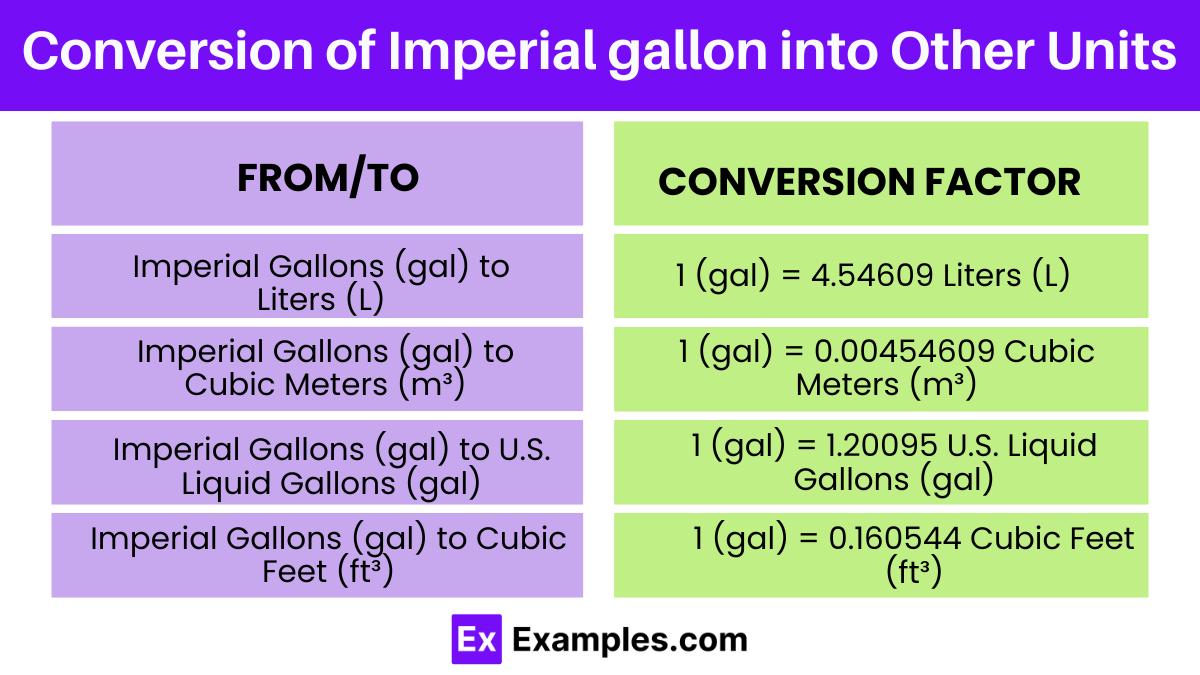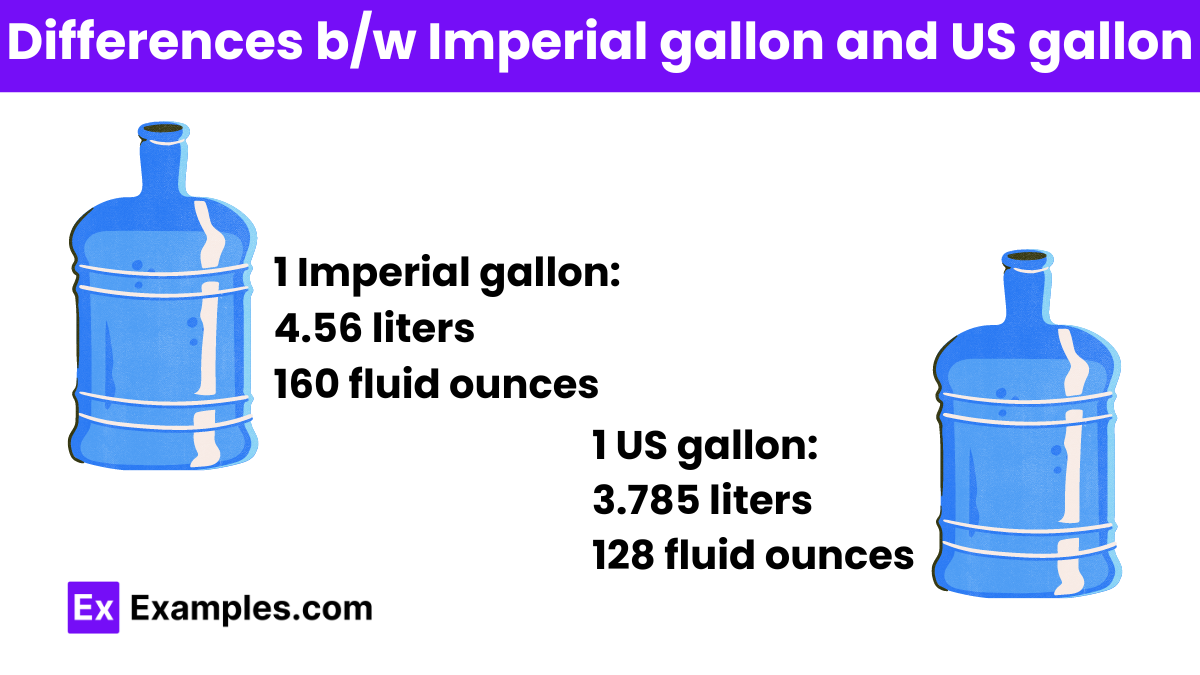How many liters are there in one Imperial gallon?
3.785 liters
4.546 liters
3.785 liters
4.231 liters


The Imperial gallon is a unit of volume measurement in the British Imperial system. It is equal to 4.54609 liters or approximately 1.20095 U.S. liquid gallons. It’s commonly used in the United Kingdom and some Commonwealth countries for measuring liquids like fuel and beverages.
The Imperial gallon is a unit of volume in the British Imperial system of measurement. It is denoted by the symbol “gal” or “Imp gal.”
| Shape | Formula | Volume (in Imperial gallons) |
|---|---|---|
| Cube or Rectangular Prism | Volume = Length × Width × Height /277.42 | Volume divided by 277.42 |
| Cylinder | Volume = π × radius² × height /277.42 | Volume divided by 277.42 |
| Sphere | Volume = 4/3 × π × radius³/277.42 | Volume divided by 277.42 |

| From/To | Conversion factor |
| Imperial Gallons (gal) to Liters (L) | 1 (gal) = 4.54609 Liters (L) |
| Imperial Gallons (gal) to Cubic Meters (m³) | 1 (gal) = 0.00454609 Cubic Meters (m³) |
| Imperial Gallons (gal) to U.S. Liquid Gallons (gal) | 1 (gal) = 1.20095 U.S. Liquid Gallons (gal) |
| Imperial Gallons (gal) to Cubic Feet (ft³) | 1 (gal) = 0.160544 Cubic Feet (ft³) |
Imperial Gallons (gal) are converted to Liters (L) using the conversion factor of 1 Imperial gallon ≈ 4.54609 liters, commonly used for liquid volume measurements in the UK.
One Imperial gallon is equivalent to approximately 0.00454609 cubic meters. This conversion factor is useful for accurately measuring volumes in both metric and Imperial units.
One Imperial gallon is approximately equal to 1.20095 U.S. liquid gallons, indicating a difference in volume between the Imperial and U.S. customary systems.
One Imperial gallon is approximately equivalent to 0.160544 cubic feet, making it a useful conversion for volume measurements in both systems.

| Aspects | Imperial Gallon | US Gallon |
| Definition | Approximately 4.54609 liters | Approximately 3.78541 liters |
| Conversion Factor | 1 Imperial gallon ≈ 1.20095 US gallons | 1 US gallon ≈ 0.832674 Imperial gallons |
| Used in | UK, some Commonwealth countries | United States, some Latin American countries |
| Size | Larger | Smaller |
| Symbol | gal (Imp gal) | gal (US gal) |
To convert from Imperial gallons to US gallons, you can use the conversion factor:
1 Imperial gallon ≈ 1.20095 US gallons
So, to convert a volume in Imperial gallons to US gallons, you simply multiply the number of Imperial gallons by 1.20095.
They are prevalent in the UK for measuring liquids like fuel, milk, and beverages, as well as in some Commonwealth countries.
Yes, though some countries, like the UK, have transitioned to using liters in some contexts, Imperial gallons are still used for certain applications.
They provide a reasonably accurate measurement for everyday use, though conversions to metric units are becoming increasingly common for international standardization.
Text prompt
Add Tone
10 Examples of Public speaking
20 Examples of Gas lighting
How many liters are there in one Imperial gallon?
3.785 liters
4.546 liters
3.785 liters
4.231 liters
An Imperial gallon is a unit of measurement used primarily in which country?
United States
United States
Australia
United Kingdom
How many quarts are there in one Imperial gallon?
4 quarts
5 quarts
6 quarts
8 quarts
How many Imperial pints are there in one Imperial gallon?
4 pints
6 pints
8 pints
10 pints
If a car's fuel efficiency is 30 miles per Imperial gallon, how far can it travel on 3 Imperial gallons?
60 miles
75 miles
90 miles
100 miles
How many Imperial gallons are in 18.184 liters?
4 Imperial gallons
3.5 Imperial gallons
3 Imperial gallons
4.5 Imperial gallons
What is the volume of 6 Imperial gallons in liters?
22.276 liters
27.276 liters
30.276 liters
36.276 liters
How many fluid ounces are there in one Imperial gallon?
128 fluid ounces
160 fluid ounces
140 fluid ounces
180 fluid ounces
If a container holds 2 Imperial gallons, how many liters does it hold?
9.092 liters
8.092 liters
7.092 liters
6.092 liters
How many Imperial gallons are there in 45.46 liters?
10 Imperial gallons
9 Imperial gallons
11 Imperial gallons
12 Imperial gallons
Before you leave, take our quick quiz to enhance your learning!

